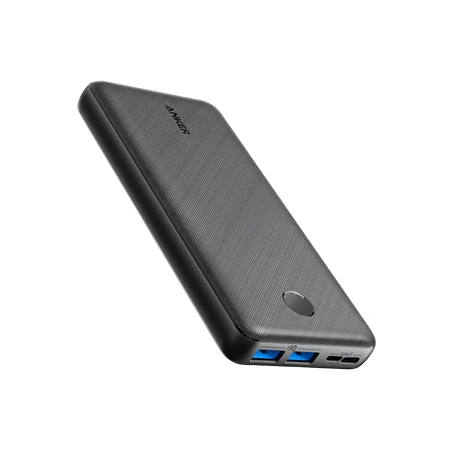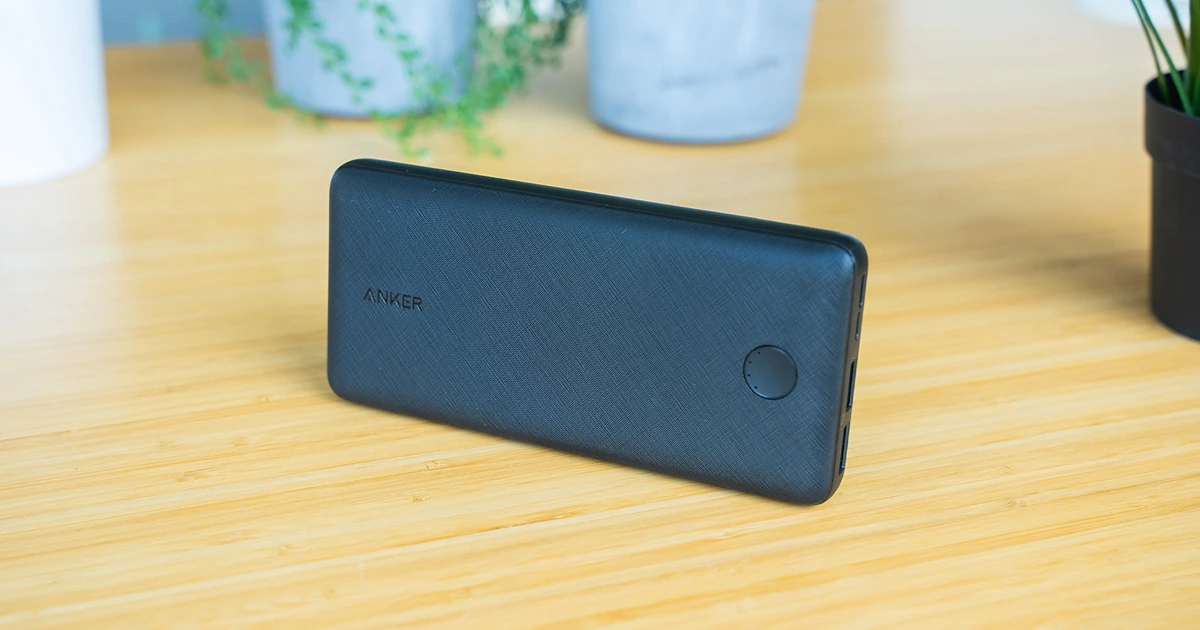
This high-capacity portable charger is designed to keep your devices powered all day with 20,000mAh of juice, dual USB ports, and fast charging capabilities.
Buy on AmazonAt first glance, the Anker 325 Power Bank (PowerCore 20K) might look like just another Anker battery pack—and that’s not a bad thing. Anker has built a strong reputation by consistently delivering reliable power banks in nearly every size and configuration imaginable. But while many of their models share a similar design, not all offer the same value. So, how does the 325 hold up? Is it worth your money, or should you keep looking? Let’s find out.
Overview
The PowerCore 20K’s outer shell is made of plastic—which might sound like a drawback at first, but it really isn’t. In fact, most top-tier battery banks use plastic casings. Sure, you can find sleeker models made from materials like carbon fiber, but those tend to come with a much higher price tag. Anker keeps things simple and affordable, and we’re fine with that.
Durability-wise, the Anker 325 Power Bank holds up impressively well. Ours still looks brand new despite regular use. Anker’s larger battery banks tend to use the same sturdy plastic shell, and in our experience, it’s proven resilient. One of our testers has been using a similar Anker 20K model for over three years—including a few rough drops from a moving bike onto pavement—with no issues. While that’s a different unit, the build is nearly identical, so it’s worth mentioning.
Now let’s talk ports. The Anker 325 feels like a mix of modern and outdated tech. You get two input options: Micro-USB and USB-C. Naturally, the USB-C is the faster of the two, but even that can take several hours to fully recharge the bank—so plan on charging it overnight. If you’re just topping it off, it still requires a decent chunk of time. That said, we’re glad USB-C is at least available for input.
But here’s the head-scratcher: both output ports are USB-A. Yep—no USB-C output. It’s a bit of a letdown, especially considering the USB-C input. We can’t explain Anker’s decision here, and yeah, it bugs us too. That said, USB-A and Micro-USB still have a strong presence around the world, even in places at the forefront of tech, so we won’t hold too much of a grudge. Still… USB-C output would’ve made this feel way more forward-thinking.
On the front, you’ll find a small circular button—a common feature for Anker power banks. Press it once to check the remaining battery life, shown through four LED indicators. Double-tap it, and you’ll activate trickle charge mode, designed for low-power devices like AirPods or Bluetooth earbuds. A green light lets you know it’s on, and tapping it again will switch it off. It’s a small but thoughtful feature that adds to the overall convenience.
Portability
If you’re here for exact dimensions, check the product link. Here, we’re more interested in how the Anker 325 Power Bank (PowerCore 20K) feels when you’re trying to stash it in different travel bags and pockets.
First things first: if you’re thinking about slipping this into your pocket, you might want to reconsider. It’s possible, sure, but it’s on the longer side, so it can feel a bit awkward. You could toss it in your back pocket with a cable leading to your front pocket device, but comfort-wise? Not exactly ideal.
Throwing it in a sling works just fine—though if you’re rocking a smaller one, the length might be a tight squeeze. Larger slings handle it with no problem.
If you’ve got a tech pouch with decent room, the 325 should slide in without much fuss. But if you’re going ultra-minimal, it’s probably better off living in your daypack or travel backpack. While this specific unit hasn’t been airborne yet, we’ve flown with plenty of 20K battery banks before—including other Anker models—and never had a single issue at security or on the plane.
Final Verdict
If you’re wondering whether the Anker 325 Power Bank (PowerCore 20K) is worth picking up, the answer is a solid yes—especially for the price. At less than half the cost of premium competitors like the NITECORE NB20000, it offers excellent value without sacrificing reliability. And while it may not have cutting-edge USB-C output, it still caters to the millions of people who use USB-A daily—and let’s be honest, those ports are far from obsolete just yet.
It’s a dependable, high-capacity charger that gets the job done, whether you’re commuting, traveling, or just need a solid backup. If you’re after an affordable and trustworthy power bank, the Anker 325 is a great pick. And hey, if you’re reading this a few years down the line—check back to see if USB-A finally went extinct. Until then, this one’s still going strong.
